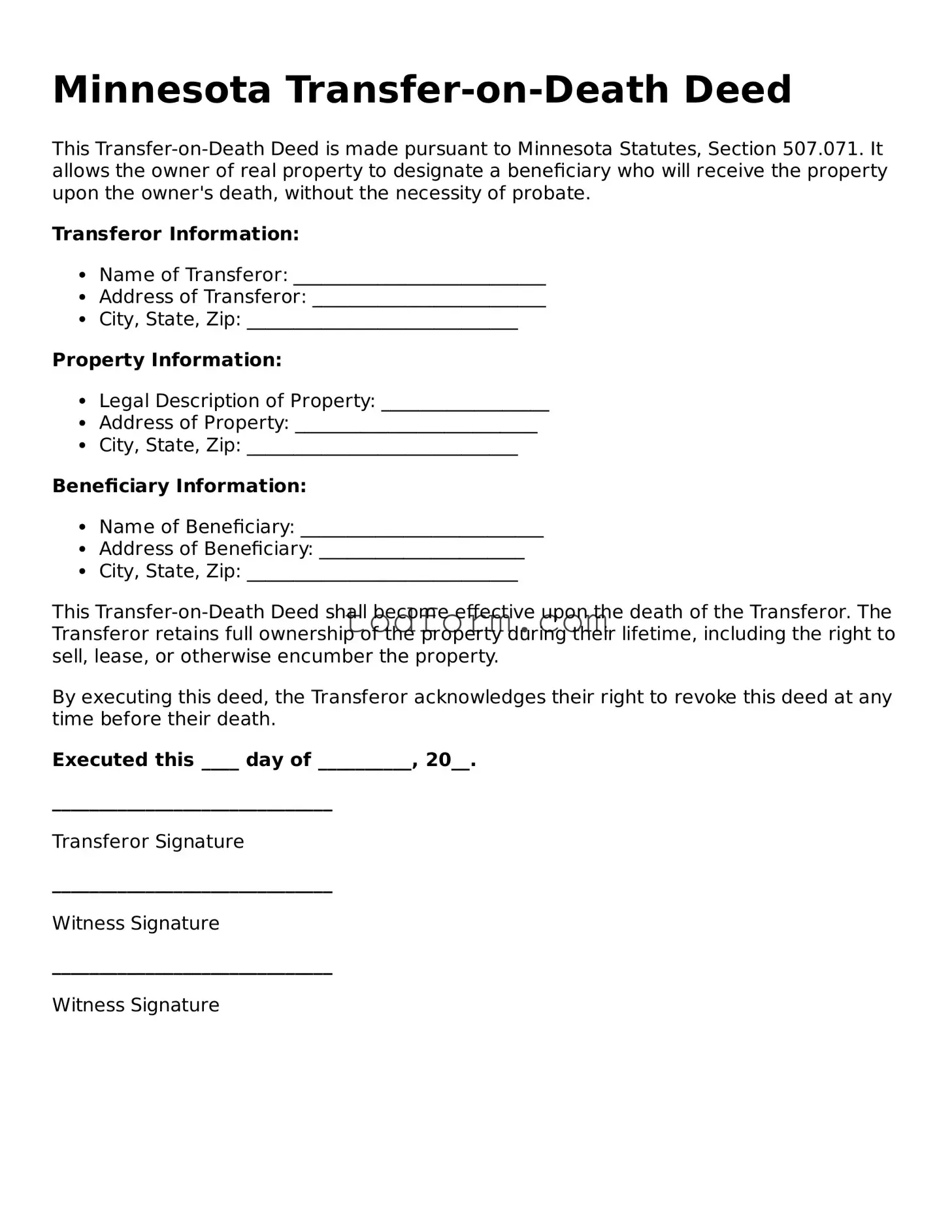Similar forms
The Minnesota Transfer-on-Death Deed (TODD) form is similar to a Last Will and Testament in that both documents facilitate the transfer of property upon the death of the owner. A Last Will outlines the distribution of assets and can specify beneficiaries for real estate. However, unlike a will, which must go through probate, a TODD allows for the direct transfer of property without the need for probate proceedings. This can simplify the process for beneficiaries and reduce associated costs and delays.
Another document akin to the TODD is a Revocable Living Trust. Both instruments allow property owners to designate beneficiaries who will receive their assets after death. A Revocable Living Trust can hold various assets, including real estate, and can be altered during the grantor's lifetime. While a TODD is limited to real estate and operates automatically upon death, a living trust provides more comprehensive estate planning options and can help avoid probate for all included assets.
The Quitclaim Deed shares similarities with the TODD in that both documents are used to transfer property. A Quitclaim Deed transfers ownership rights without guaranteeing that the title is clear. While a TODD is executed to take effect after the owner’s death, a Quitclaim Deed can be used during the owner's lifetime. Both can serve to convey property interests, but a Quitclaim Deed does not include the automatic transfer feature that characterizes a TODD.
Power of Attorney (POA) documents also bear resemblance to the TODD. Both allow for the management of property, but they serve different purposes. A POA grants an individual the authority to make decisions on behalf of the property owner while they are alive, which can include selling or transferring property. In contrast, a TODD specifically designates a beneficiary to receive property after the owner's death, without granting any rights during the owner's lifetime.
Finally, the Beneficiary Designation form is another document that aligns with the principles of the TODD. This form is often used for financial accounts and insurance policies to designate who will receive the assets upon the account holder's death. Like the TODD, a Beneficiary Designation allows for a direct transfer of assets without going through probate. However, the key difference lies in the types of assets covered; the TODD is specific to real estate, while Beneficiary Designation forms apply to various financial instruments.
